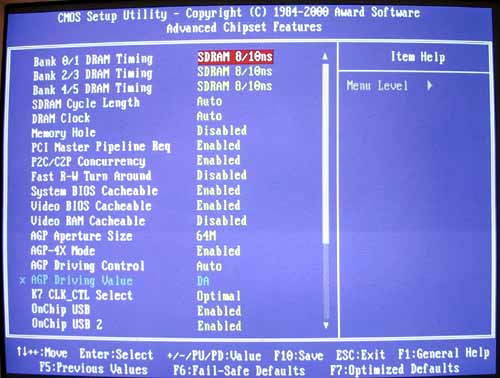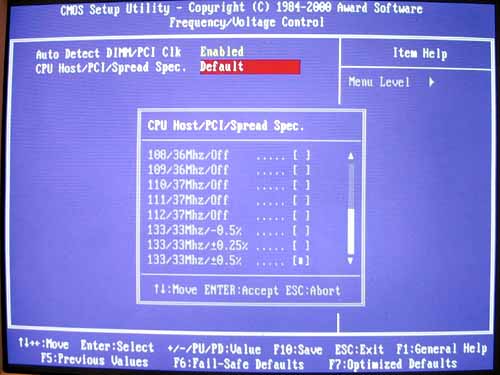FIC AZ-11
|
Motherboard Specifications |
|
| CPU Interface |
Socket-A
|
| Chipset |
VIA KT133
VIA 8363 North Bridge VIA 686A South Bridge |
| L2 Cache |
N/A (on-chip)
|
| Form Factor |
ATX
|
| Bus Speeds |
100
/ 102 / 104 / 106 / 107 / 108
109 / 110 / 111 / 112 / 133 |
| Voltages Supported |
Auto Detect
|
| Memory Slots |
3 168-pin DIMM Slots
|
| Expansion Slots |
0 AMR Slots
1 AGP Slot 5 PCI Slots 0 ISA Slots |
| AC'97 |
Sigmatel STAC9744T
|
| BIOS |
Award 6.00PG
|
The first revision of the FIC SD-11 was one of the worst boards to come through the AnandTech lab. Some dilligent work on the board allowed later revs of the SD-11 to become a much more respectable Athlon motherboard solution. A number of large OEM's certainly believed in the SD-11 and used the board in their systems. That board was a very unique one, with a sprawling PCB layout, optional onboard IEEE-1394 Firewire, and the first to use a hybrid AMD 750 North Bridge / VIA 686A South Bridge chipset.
FIC's first Socket-A board, the AZ-11 is a much more conventional design with the majority of the kinks worked out already. Serving as a testament to this fact, the AZ-11 is the Compaq reference board that AMD shipped with their evaluation Thunderbird systems. The only big difference is in the BIOS, where the FIC version uses a traditional Award BIOS and the Compaq uses a custom OEM Compaq BIOS. As such, the FIC is obviously the more tweakable version.

Our pre-production AZ-11 featured FSB speeds of 100 / 102 / 104 / 106 / 107 / 108 / 109 / 110 / 111 / 112 / 133, although our early overclocking experiments with the KT133 chipset have only been able to hit FSB speeds of 105 MHz. On the more mature Slot-A platforms, we were able to get in the vicinity of 110 MHz. The available FSB speeds and the stability of those settings could easily change for the final board. No core voltage tweaks were available in the revision of the BIOS that we tested.

The AZ-11 is still a relatively large board, although not as big as its older brother SD-11. Interestingly, quite a bit of space on the left side of the board remains unused. FIC could have easily fit in another PCI slot or a PCI/ISA shared slot. Also interesting is the fact that there is no AMR slot on the board. Many of you will rejoice at this fact, but it is nevertheless odd for a Compaq to choose a board without such support.
At first glance, the AZ-11 appears to be missing the second serial port connector. Rather, the PCB was designed such that either the KT133 or KM133 chipset, which are pin compatible, could be used. The KM133 is identical to the KT133, but has integrated Savage4 video. That "missing" serial port is where the monitor port would be if the KM133 were included.











0 Comments
View All Comments